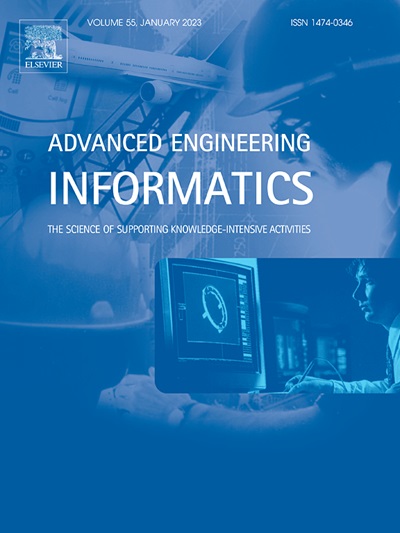学习全局有序和局部一致的退化表示,用于剩余使用寿命预测
IF 9.9
1区 工程技术
Q1 COMPUTER SCIENCE, ARTIFICIAL INTELLIGENCE
引用次数: 0
摘要
近年来关于剩余使用寿命(RUL)估计的研究表明,深度神经网络可以有效地从传感器数据中提取信息特征,从而提高预测性能。然而,大多数现有方法仅仅依赖于标签和数据之间的直接映射来构建特征空间,而忽略了对特征关系的探索。本文认为强广义退化特征应具有全局有序性和局部一致性两个性质。前者源于退化过程的不可逆性,后者反映了系统状态在短时间内的稳定性。在这项工作中,提出了一种全局有序和局部一致的表示学习(GOLCRL)方法用于规则语言的预测。GOLCRL利用堆叠卷积神经网络提取退化表征,融合多尺度卷积和通道注意机制,促进跨时空维度的信息交互。为了精炼有序关系,GOLCRL通过有监督的群体对比学习和相关感知的分布对齐对特征空间的几何结构进行正则化。此外,GOLCRL通过伪标记策略引导特征空间中相邻样本的标签平滑,将其映射到更连贯的标签区域,从而增强局部一致性。两个案例研究表明,GOLCRL在泛化能力方面优于现有方法,实现了更准确的RUL预测结果。本文章由计算机程序翻译,如有差异,请以英文原文为准。
Learning globally ordered and locally consistent degradation representations for remaining useful life prediction
Recent studies on remaining useful life (RUL) estimation have shown that deep neural networks can effectively extract informative features from sensor data, thereby improving the prediction performance. However, most existing methods rely solely on direct mapping between labels and data to construct the feature space, while ignoring the exploration of feature relationships. This study believes that strongly generalized degradation features should have two properties: global orderliness and local consistency. The former stems from the irreversibility of the degradation process, while the latter reflect the stability of the system state in a short period of time. In this work, a globally ordered and locally consistent representation learning (GOLCRL) method is proposed for RUL prediction. GOLCRL extracts degradation representations using stacked convolutional neural networks, integrating multi-scale convolution and channel attention mechanism to facilitate the information interaction across spatial and temporal dimensions. To refine the ordered relationships, GOLCRL regularizes the geometric structure of the feature space through supervised group contrastive learning and correlation-aware distribution alignment. Moreover, GOLCRL guides the label smoothing of neighboring samples in the feature space through a pseudo-labeling strategy, mapping them to a more coherent label region, thereby enhancing local consistency. Two case studies demonstrate that GOLCRL outperforms existing methods in terms of generalization capabilities, achieving more accurate RUL prediction results.
求助全文
通过发布文献求助,成功后即可免费获取论文全文。
去求助
来源期刊

Advanced Engineering Informatics
工程技术-工程:综合
CiteScore
12.40
自引率
18.20%
发文量
292
审稿时长
45 days
期刊介绍:
Advanced Engineering Informatics is an international Journal that solicits research papers with an emphasis on 'knowledge' and 'engineering applications'. The Journal seeks original papers that report progress in applying methods of engineering informatics. These papers should have engineering relevance and help provide a scientific base for more reliable, spontaneous, and creative engineering decision-making. Additionally, papers should demonstrate the science of supporting knowledge-intensive engineering tasks and validate the generality, power, and scalability of new methods through rigorous evaluation, preferably both qualitatively and quantitatively. Abstracting and indexing for Advanced Engineering Informatics include Science Citation Index Expanded, Scopus and INSPEC.
 求助内容:
求助内容: 应助结果提醒方式:
应助结果提醒方式:


